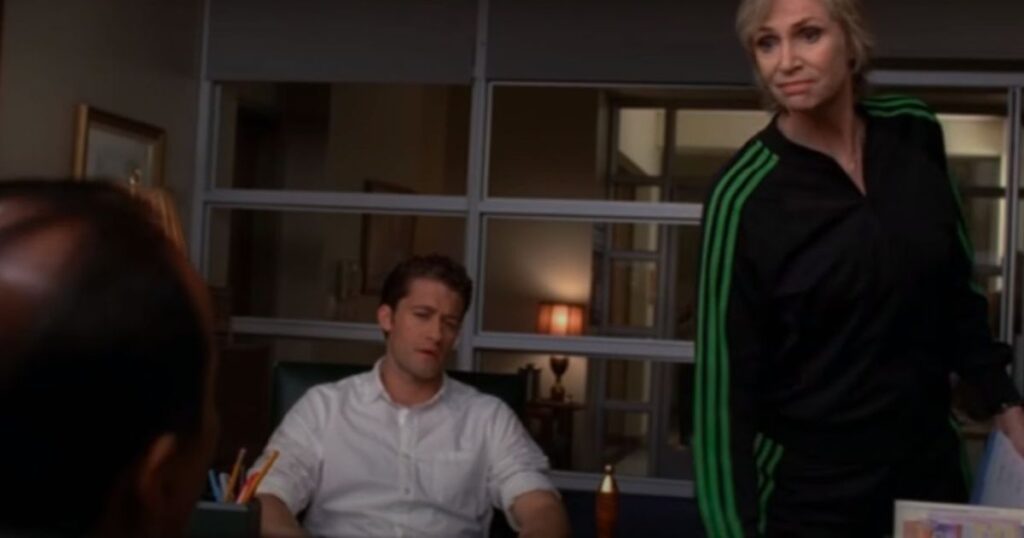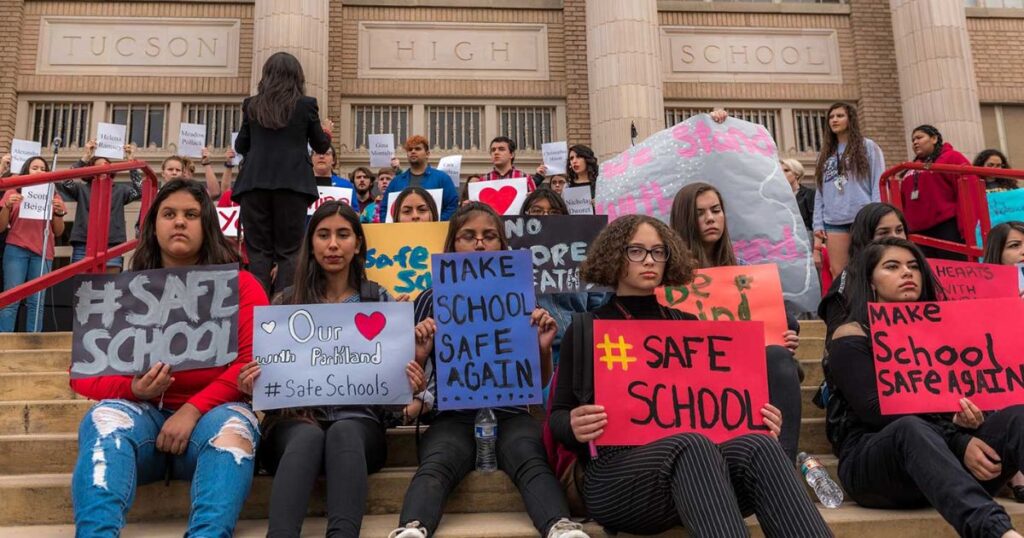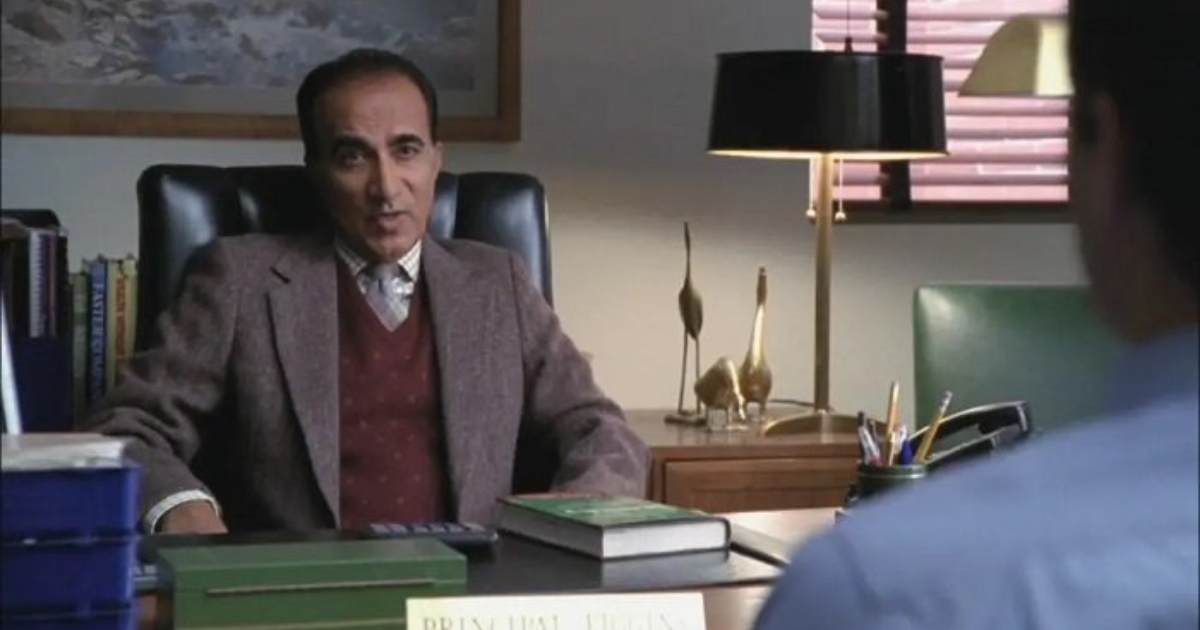In the bustling halls of Springfield High School, a storm stirred recently as Emma, a dedicated and unique teacher, found herself embroiled in an emotional argument with the formidable Principal Figgins.
This article aims to delve into the layers of this clash, unraveling the complexities from Emma’s passionate perspective to his resolute stand. Emma Argues we’ll explore the heated topic of Emma arguing with Principal Figgins, attempts at resolution, and the profound impact on the school’s dynamics and the broader community.
Emma’s Character and Perspective

Emma is portrayed as a teacher with distinctive quirks, contributing to the series’ dynamic. Her meticulous nature and unwavering commitment to students make her popular among fans.
As an advocate for student rights, she emerged as a vocal protagonist in this drama. Her motivation came from a deep belief in justice, prompting her to challenge school policies she deemed unfair.
Principal Figgins
Principal Figgins, a defender of order, countered Emma’s arguments with a commitment to upholding established policies. His perspective, rooted in maintaining discipline, reflected the need for structure and authority. Now, let’s talk about Emma arguing with Principal Figgins!
The Heated Exchange
The intense clash within the head’s office set the stage for a passionate debate between Emma, the dedicated teacher, and the formidable school leader, Principal Figgins. Emma Argues the teacher, driven by strong beliefs, presented impassioned pleas while he countered with an authoritative demeanor.
A volley of words marked the verbal exchange, each participant fervently defending their stance. The charged atmosphere left a lingering tension, creating a palpable sense of discord within the confined space of the head’s office.
Read More Blog: How To Clean A Kendra Scott Necklacehttp://How To Clean A Kendra Scott Necklace
Resolution Attempt Emma Argues

Following the heated confrontation, faculty and counselors intervened, attempting to find common ground and resolve the issues. The process involved delicate negotiations to bridge the gap between the perspectives of students advocating for change and the established administrative authority.
Hence, the challenges were manifold, requiring careful consideration of each party’s concerns and aspirations. Despite the complexities, the resolution attempt reflected the school’s commitment to addressing internal conflicts through dialogue and collaboration.
Impact on School Dynamics
Their disagreement had far-reaching consequences, substantially affecting the dynamics of Springfield High School. Changes were evident in the daily interactions between students and instructors and the general classroom environment.
The friction caused subtle adjustments in the fabric of the school community, requiring a rethinking of how people worked and communicated in the educational setting. Emma Argues these overt and nuanced changes highlighted the confrontation’s transformational effect on the school’s overall dynamics.
Community Response
The conflict had far-reaching consequences, evoking various reactions from parents, alums, and the larger community. The external perspective was critical in framing the incident’s narrative, helping better understand the social ramifications of disputes within educational institutions.
Whether supportive or necessary, the community response became an essential component of the continuing conversation, emphasizing the link of educational institutions to the larger social fabric.
Reflection on Consequences
I was examining the aftermath and reflecting on the consequences that unfolded within the school community. Beyond immediate relationships between students and teachers, the repercussions were observed in the overall morale within the school.
Understanding whether any lasting effects persisted or if the community successfully reconciled and rebuilt trust provided valuable insights into the long-term implications of such confrontations on the school’s educational environment.
Administrative Adaptations
In response to Emma arguing with Principal Figgins, the school administration implemented adaptations to address the concerns the teacher and the student body raised.
This involved reviewing existing policies and possibly introducing new initiatives to bridge the gap between administrative authority and student activism. Emma Argues analyzing the organizational response provided a glimpse into the institution’s willingness to adapt, fostering a more inclusive and equitable learning environment.
Lessons for Future Interactions
The aftermath of the Emma argues with Principal Figgins clash served as a pivotal moment for the school community to learn valuable lessons for future interactions. Reflecting on the experiences, this matter highlighted opportunities for growth and understanding.
Exploring these lessons from the dispute provided a roadmap for fostering more constructive dialogue and collaboration among students, teachers, and administrators in the future. Emma Argues it underscored the importance of learning from challenging experiences to build a stronger and more cohesive educational community.
Read More Blog: http://How To Clean A Kendra Scott Necklace
Student Mobilization and Activism

The clash catalyzed student mobilization and activism within Springfield High School. This involved students coming together to voice their concerns, sparking a sense of unity and collective action.
The incident potentially led to the formation of student-led initiatives, protests, or advocacy groups.
Exploring student mobilization added a layer to the narrative, showcasing the potential for empowered student bodies to influence institutional change and contribute to a more inclusive school environment.
Media Coverage and Public Perception
Beyond the local community, Emma argues with Principal Figgins. The conflict garnered attention in the media, influencing the public’s perception of Springfield High School. Examining how the incident was portrayed in various media outlets revealed whether the coverage was fair, biased, or sensationalized.
The scrutiny from external sources sheds light on the broader societal discourse surrounding educational institutions and their internal conflicts. It also considered the impact of the incident on the school’s reputation and how external perspectives influenced the ongoing narrative within the community and beyond.
Impact on Student Advocacy and Empowerment

The clash profoundly impacted student advocacy and empowerment within Springfield High School. Emma Argues Emma Argues examining student advocacy and empowerment adds a crucial dimension to the narrative, revealing the potential for increased student involvement and influence in decision-making processes within the educational institution.
This point underscores the evolving role of students as active contributors to the dialogue surrounding school governance and policy.
Frequently Asked Questions
Here are frequent questions related to the topic “Emma Argues With Principal Figgins”
Why does Emma argue with Principal Figgins?
She may disagree with his decisions or policies.
What are some common topics of disagreement between Emma and Principal Figgins?
Rules, discipline, academic freedom.
How do these arguments typically start?
Often triggered by an incident or decision made by Principal Figgins that Emma opposes.
How does Emma express her opinions during these arguments?
Assertively but respectfully; she might use facts, logic, and personal experiences to support her points.
What insights can be gained from the confrontation between Emma and Principal Figgins?
The importance of open communication, understanding different perspectives, and finding solutions through dialogue.
Conclusion
This big argument at Springfield High School had a lot of effects. It wasn’t just about Emma arguing with Principal Figgins in the office; it changed how students and teachers worked together and even how people outside the school saw it. Emma Argues we looked at how the school tried to fix things, what happened because of the argument, and what lessons everyone learned. The clash made students come together to speak up and try to change things, and it also got attention from the media.











